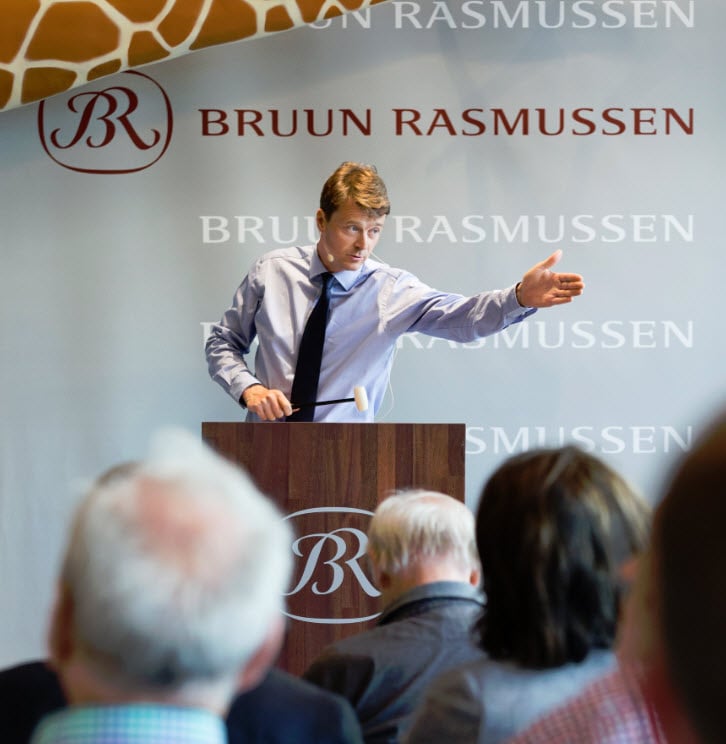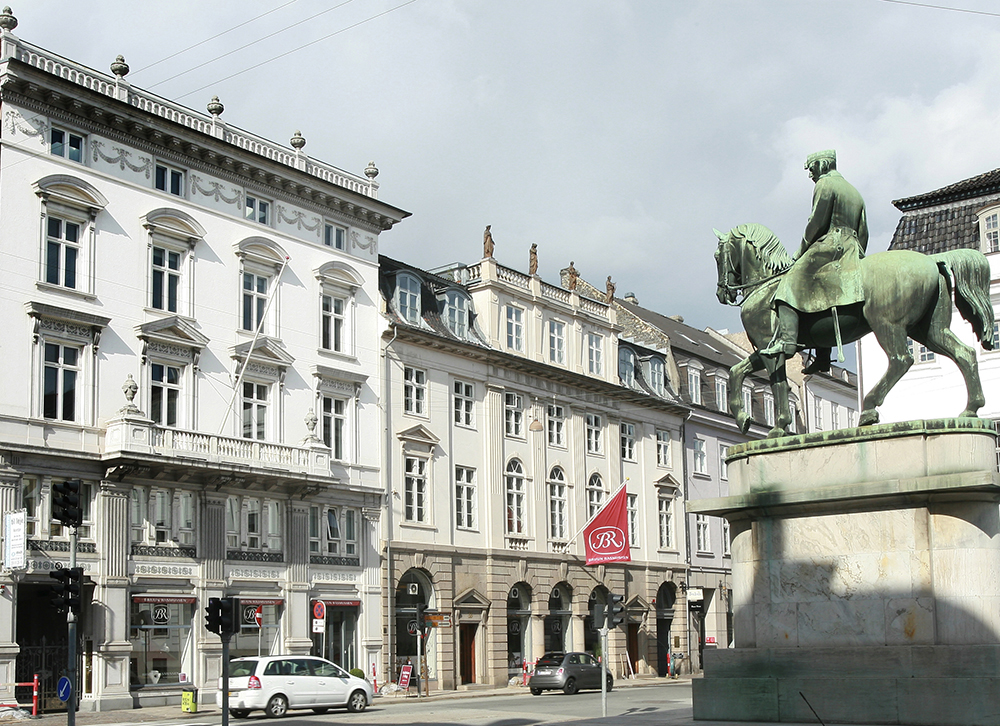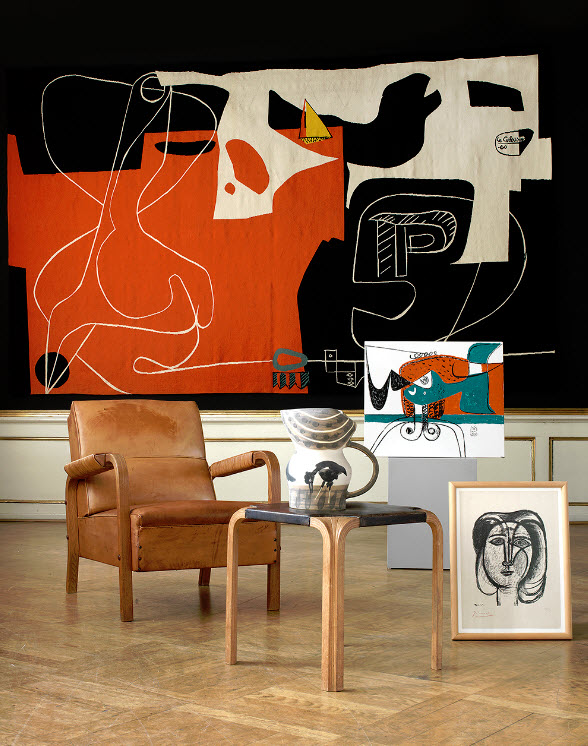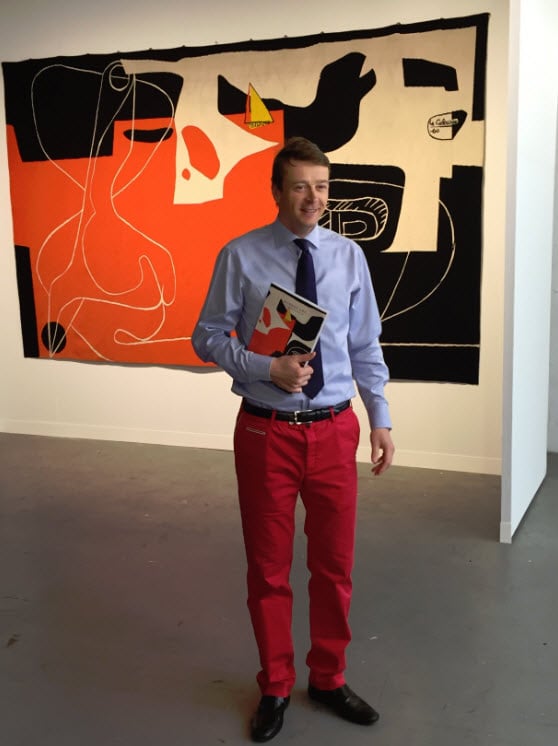People
Frederik Bruun Rasmussen On Why Nordic Art and Design Is A Smart Buyer’s Market
American bidders are increasingly winning key lots at auction.

American bidders are increasingly winning key lots at auction.

Artnet News


Bruun Rasmussen Auctioneers in Copenhagen, Denmark (Photo: ©Bruun Rasmussen Auctioneers).
Frederik Bruun Rasmussen represents the third generation in the family-owned, Danish auction house Bruun Rasmussen Auctioneers. The auction house specializes in art, design, antiques, jewelry, and collector’s items, such as wine, books, stamps, and coins.
Frederik himself is passionate about modern art and Nordic design, which in recent years has given Bruun Rasmussen its greatest increase in sales revenue.
Tell us about your background.
I grew up in my family’s auction house, but while our sales room in Copenhagen certainly feels like home to me, I have worked in many different auction houses around the world, such as Neumeister in Munich, Tajan in Paris, and Christie’s in New York.
This relationship between Denmark and the world is also reflected in my work today, where I function as director of international sales and valuations at Bruun Rasmussen. I therefore still travel the world quite a bit to meet with new customers and assist our current international customers. When there is an international auction in our sales room here in Copenhagen, you can also often see me at the podium as the auctioneer, or I will be manning a phone, where I bid on behalf of clients from all over the world.
What do you need to be a good dealer?
For me, being a good dealer is very much about trust and insight into the art market. Both elements are important when dealing with the estates and families who are auctioning off their often highly unique collections. A great personal highlight for me in this work actually occurred this spring, when we were asked to auction off a number of prominent lots from the Danish architect Jørn Utzon’s collection. Through this connection, I got to visit the family’s home north of Copenhagen, which Utzon himself designed.

Selected works from the Jørn Utzon Collection, including works by Le Corbusier, Pablo Picasso, and Alvar Aalto (Photo: ©Bruun Rasmussen Auctioneers).
How do you feel before a sale?
The amount of work involved in preparing and promoting an auction means that there is always a great sense of satisfaction, when you see all that preparation come to fruition at the sale.
We have, for instance, been promoting the auction of Utzon’s collection over the past six months. This promotion has included the publication of several catalogues and two large public events in New York and London. One of the Utzon collection’s undisputed highlights, a tapestry by Le Corbusier, was exhibited at the Collective Design fair in New York and at the Embassy of Denmark in London. All these different initiatives should help secure a great sale for the collection on June 9.

Frederik Bruun Rasmussen in front of Le Corbusier’s tapestry at Collective Design 2015 in New York (Photo: ©Bruun Rasmussen Auctioneers). Le Corbusier, Les dés sont jetés (1960), tapestry, 218 x 355 cm. Estimate: 700,000–800,000 DKK / 94,000–107,000 USD.
How is the atmosphere of an auction sale?
The essence of an auction never changes—there is always a great sense of excitement in the room on the day of the auction. Today, customers are bidding via very different channels, some are physically present in the room, while others bid via phone, via commission, or via our Live Bidding at bruun-rasmussen.dk. All these different forms of bidding make it extra important for the auctioneer to keep up the pace and create a good atmosphere during the auction, for instance, with a quick, funny remark to keep people on their toes.
Bids are increasingly coming from all corners of the world. What can you say about that trend?
Currently we are experiencing a massive interest in Nordic design, which today is our greatest source of sales revenue. It is particularly American buyers who have increased their bidding, but customers from Europe are joining in as well, especially in France, where we will be hosting a showing of a piece by Pierre Soulages (estimated at €400,000) in Paris this September. For quite some time, we have also experienced a great interest in our Oriental auctions as well, where collectors from China and Hong Kong are buying back their ancestral heritage from well-traveled Danes.
What are your favorite museums/galleries?
Among my favorite museums is Louisiana in Denmark. Not only is the museum situated beautifully along the coastline of north Copenhagen, its park is filled with sculptures by Henry Moore, Alexander Calder, and one of the most impressive permanent collections of Alberto Giacometti sculptures. The museum’s founder, Knud W. Jensen, had a visionary understanding of not only contemporary art, but of the museum experience itself. Jensen wanted to make sure that visitors felt at home in the museum, which is shaped as an extended version of a villa, with rooms that never feel overcrowded by the exhibits.
Another favorite museum of mine is the Musée Picasso in Antibes. Be sure to visit it during the summer, when the strong sunlight enhances the experience, and the windows of the museum offer great views of the Mediterranean Sea nearby.
If I can mention one more museum, it would be Ordrupgaard. This is another museum that has a great location on the outskirts of Copenhagen. Its collection of art is impressive, especially its collection of important French painters, including Paul Cézanne, Edgar Degas, and Paul Gauguin, as well as Danish masterpieces by Vilhelm Hammershøi, among others. The museum also includes an extension designed by Zaha Hadid, as well as the private home of Danish designer Finn Juhl, which is a favorite travel destination among design enthusiasts worldwide.
If you could have dinner with any three artists, who would it be?
I would choose Pablo Picasso for his pure brilliance. He was an artist who mastered all the art forms he engaged in. His art speaks to everyone, and I cannot think of another 20th-century artist who I am just as sure will be relevant in 200 years. Picasso will be. With so many periods and ‘isms’ contained in one person, I am sure it would make for an interesting evening.
Two other personalities I would like to enjoy a dinner with are architect and professor Ole Wanscher and cabinetmaker A. J. Iversen. They represent a strong collaborative effort in their work, combining Wanscher’s bulletproof drawing skills with Iversen’s incredible knowledge of carpentry. They are the embodiment of craftsmanship and proof of the importance of not compromising on the material.
Finally, why not shoot for the moon and ask for a dinner with Leonardo da Vinci. Like Picasso, da Vinci was a master of many genres, and his relevance is still evident 500 years on. A dinner with da Vinci might also be the only chance of getting the Mona Lisa up for auction.